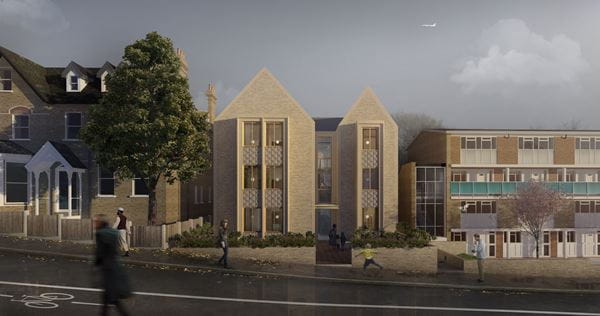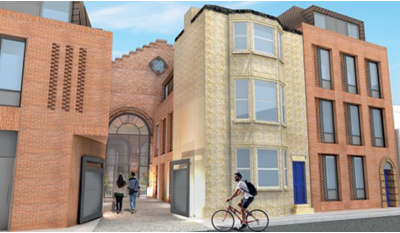In a short space of time, the private rented sector has radically changed, with the majority of homes for rent in many cities across the UK now being built by private developers and owned and managed by institutional landlords under the Build to Rent (BTR) model.
The product has evolved rapidly to meet the needs of an expanding market, offering an ever-increasing range of services, from high speed broadband to leisure centres and car clubs, adaptable floorplans and community benefits which extend beyond the scheme itself. BTR has been successful in attracting significant investment, delivering much needed units at speed, creating greater security for tenants, using innovative means of off-site manufacturing to reduce disruption through construction, and creating attractive public spaces. But how has the otherwise very well established property world responded to this new entrant? How does this ‘alternative’ product address the pressing issues that the market faces, and has policy responded sufficiently?
In a Government consultation Planning and Affordable Housing for Build to Rent (2017), no fewer than 78% of respondents (and 97% of developers and investors) considered that market failures were impeding the development of BTR, and that national policy intervention was required. David Churchill is a partner at Carter Jonas and specialises in planning. He has advised on BTR schemes from their inception and welcomes the fact that the Government has now recognised this important product. “In the past year, we have seen revisions in the NPPF which reflect the importance of BTR, and the publication of a Planning Practice Guidance (PPG) on BTR. This was widely seen as the Government finally acknowledging BTR’s potential to address the housing crisis. The PPG requires that BTR is taken into account as part of Local Plan preparation. It also establishes Affordable Private Rent as a new class of affordable housing and sets a typical expectation of 20% affordable housing provision in BTR developments. Appreciating the fact that restrictive covenants can limit a scheme’s potential for future growth, the PPG puts in place means by which covenants can be terminated. It demonstrates an understanding of the likely market and location of such developments by stating that national space standards need not apply.”
BTR has undoubtedly grown partly as a result of the introduction and extension of permitted development rights (PDR). According to the British Property Federation, 30% of completed BTR homes have been delivered through PDR. “Despite the fortuitous timing of PDR,” says David, “one of the greatest barriers to BTR investment and delivery is finding appropriate sites. Perhaps more so than other property assets, the success of BTR depends on the availability of large, centrally located sites.” BTR schemes can suffer as a result of inflexible planning regulations, David explains. “Policy requirements to deliver three and four-bedroom units, and planning rules that require a minimum of 35% affordable housing are stumbling blocks. Local authorities must realise that the benefits of BTR cannot necessarily be delivered alongside such stringent requirements. “Furthermore, BTR is a very different financial model to build-for-sale, in which developers typically benefit from sales revenue throughout the construction process. In the case of BTR, financial return does not start until the first property is let and this means that BTR cannot compete with build-for-sale on land acquisition and pricing. Yet this is not recognised in policy.”
BTR has been instrumental in exemplifying the benefits of modern methods of construction. “Modular construction, panelised systems and even 3D printing are being incorporated into BTR schemes. This satisfies the sustainability requirements, overcomes the issue of on-site skills shortages and delivers economies of scale with speedy build-out rates. Furthermore, modern methods of construction (MMC) has the benefit of creating a flexible product which can be adapted by its user over time.” Considering the significant advancements that have been made by BTR, and its recognition in statute, it is surprising that there is no specific use class for BTR. David explains; “currently, planning authorities tend to adopt their own approaches to planning requirements for BTR schemes but there is a general feeling that legislation must move towards the standardisation of planning requirements. It is widely believed that the establishment of a dedicated BTR land use class would enable local authorities to use their strategic planning powers to focus delivery of privately rented homes more appropriately.” So, is a new use class likely to come about any time soon? With the Government consulting on the possibility of expanding and merging existing use classes, this appears unlikely. “The lack of a use class could potentially work in favour of BTR,” David reflects. “While there is no separate planning use class or zoning, any suitable site could technically receive bids from BTR developers. More generally, the lack of a clear definition suits a product which has succeeded because of its ability to evolve and adapt.” Very little stands in the way of BTR development. While the market, the investment, the sites and the policy remain aligned in its favour, it shows no sign of declining.
This article was first published in Planning & Development Insite Summer 2019 edition, click here to download the issue.




 Following a review of their office accommodation, Hobson House became surplus to their requirements. As a result, the charity needed to find an alternative use for the building. The current scheme meets these objectives with the added benefit of bringing investment into the City, both through the construction phase and ongoing use as a hotel. Carter Jonas worked with Henley Homes Plc to obtain planning consent for the conversion, part demolition and significant extensions. The building is Grade II listed, and previously occupied as offices, which have been in decline for a number of years requiring significant investment. Our proposal was to provide a new lease of life as a boutique hotel, to be called ‘The Hobson’, which is ideally situated for visitors to Cambridge.
Following a review of their office accommodation, Hobson House became surplus to their requirements. As a result, the charity needed to find an alternative use for the building. The current scheme meets these objectives with the added benefit of bringing investment into the City, both through the construction phase and ongoing use as a hotel. Carter Jonas worked with Henley Homes Plc to obtain planning consent for the conversion, part demolition and significant extensions. The building is Grade II listed, and previously occupied as offices, which have been in decline for a number of years requiring significant investment. Our proposal was to provide a new lease of life as a boutique hotel, to be called ‘The Hobson’, which is ideally situated for visitors to Cambridge.





